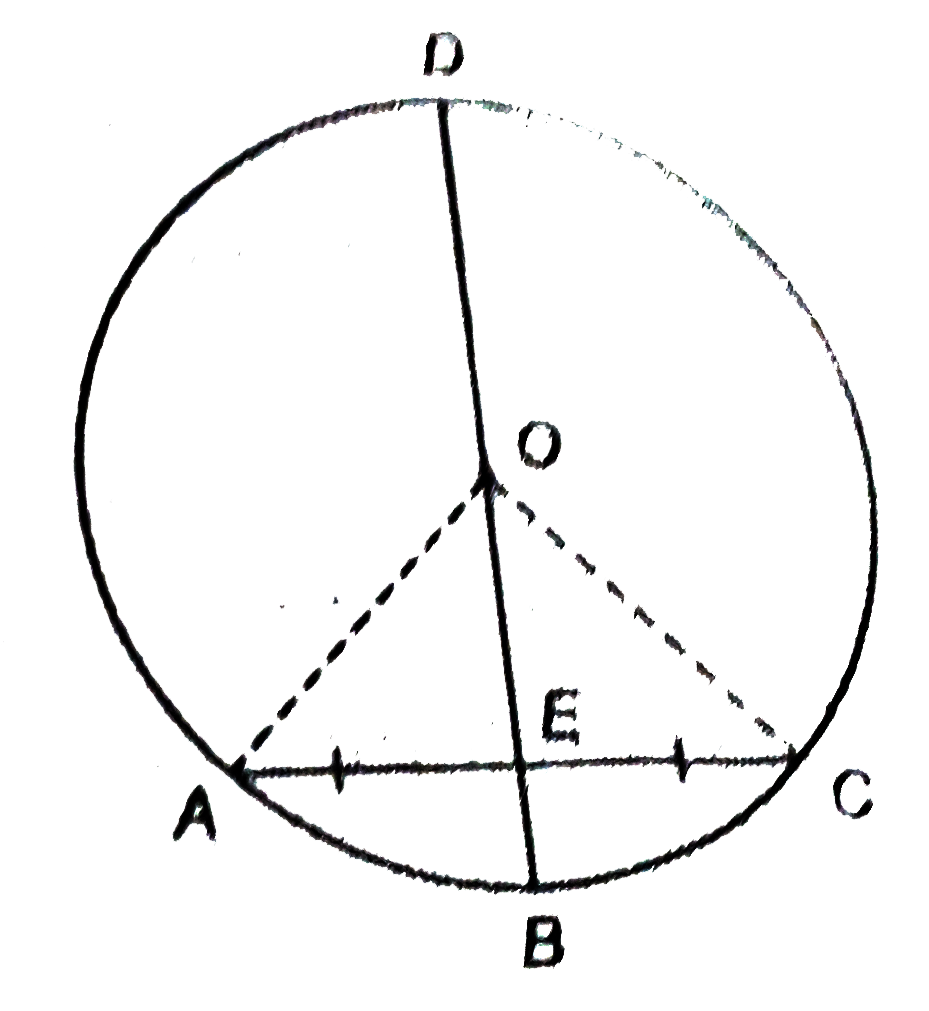In the given figure, a diameter PQ of a circle bisects the chord RS at the point O. If PS is parallel to RQ, prove that RS is also a diameter of the circle.
To prove that RS is a diameter of the circle, we will follow these steps:
Step 1: Understand the Given Information
We are given a circle with a diameter PQ that bisects the chord RS at point O. We also know that PS is parallel to RQ.
Step 2: Identify Angles Using Parallel Lines
Since PS is parallel to RQ, we can use the properties of alternate angles:
- Angle PSO = Angle QRO (alternate angles)
- Angle OSP = Angle OQR (alternate angles)
Step 3: Identify Vertically Opposite Angles
We can also identify vertically opposite angles:
- Angle POS = Angle QOR (vertically opposite angles)
Step 4: Establish Similarity of Triangles
From the angles identified, we can conclude that:
- Triangle POS is similar to Triangle QOR (by the Angle-Angle-Angle (AAA) similarity criterion).
Step 5: Set Up the Proportionality from Similar Triangles
From the similarity of triangles, we can write the following proportion:
OQOR=OPOS
Step 6: Use the Given Information About the Bisection
Since O bisects RS, we have:
OR=OS
Substituting this into our proportion gives:
OQOR=OPOR
Step 7: Simplify the Proportions
This simplifies to:
OQ=OP
Step 8: Conclude the Position of O
Since O is equidistant from P and Q, O must be the midpoint of the diameter PQ. This means that O is the center of the circle.
Step 9: Conclude that RS is a Diameter
Since RS passes through O (the center of the circle), it must be a diameter of the circle.
Final Conclusion
Thus, we have proved that RS is also a diameter of the circle.
---
We are given a circle with a diameter PQ that bisects the chord RS at point O. We also know that PS is parallel to RQ.
Since PS is parallel to RQ, we can use the properties of alternate angles:
- Angle PSO = Angle QRO (alternate angles)
- Angle OSP = Angle OQR (alternate angles)
We can also identify vertically opposite angles:
- Angle POS = Angle QOR (vertically opposite angles)
From the angles identified, we can conclude that:
- Triangle POS is similar to Triangle QOR (by the Angle-Angle-Angle (AAA) similarity criterion).
From the similarity of triangles, we can write the following proportion:
OQOR=OPOS
Since O bisects RS, we have:
OR=OS
Substituting this into our proportion gives:
OQOR=OPOR
This simplifies to:
OQ=OP
Since O is equidistant from P and Q, O must be the midpoint of the diameter PQ. This means that O is the center of the circle.
Since RS passes through O (the center of the circle), it must be a diameter of the circle.
Thus, we have proved that RS is also a diameter of the circle.
Topper's Solved these Questions
Similar Questions
A diameter of a circle is a chord that ..... the centre of the circle.
View SolutionThe diameter of a circle is its ___________ chord.
View SolutionIn the adjoining figure, BD is the diameter of the circle which bisects the chord AC at point E. If AC=8cm, BE=2cm, then find the radius of the circle.

View SolutionIf a diameter of a circle bisects each of the two chords of a circle, prove that the chords are parallel.
View SolutionIf a diameter of a circle bisects each of the two chords of a circle, prove that the chords are parallel.
View SolutionProve that a diameter AB of a circle bisects all those chords which are parallel to the tangent at the point A.
View SolutionIf bisectors of opposite angles of a cyclic quadrilateral ABCD intersect the circle, circumscribing it at the points P and Q, prove that PQ is a diameter of the circle.
View SolutionIn the given figure, the diameter CD of a circle with centre 0 is perpendicular to the chord AB.
If AB = 8 cm and CM = 2 cm, find the radius of the circle.

View SolutionProve that a diameter of a circle which bisects a chord of the circle also bisects the angle subtended by the chord at the centre of the circle.
View SolutionA chord PQ of a circle is parallel to the tangent drawn at a point R of the circle,Prove that R bisects the arc PRQ.
View Solution
